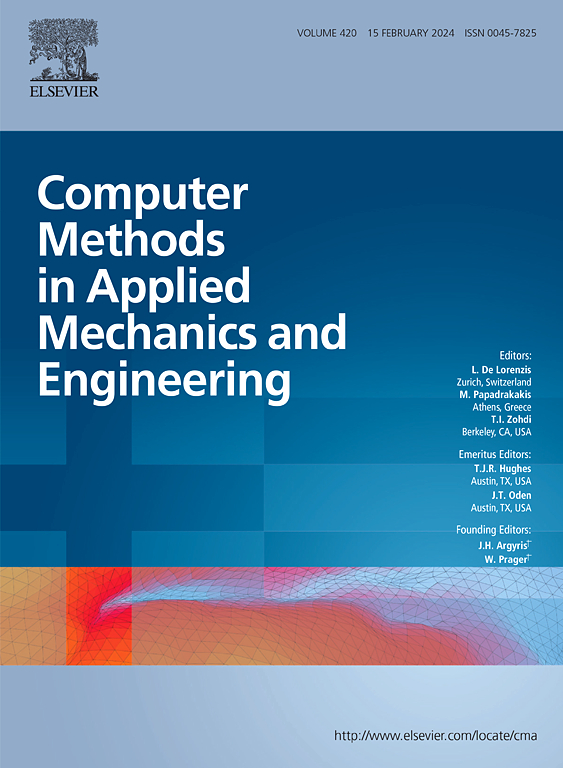A novel coupled clustering FFT2 multiscale method for modeling the nonlinear behavior and failure of composites
IF 6.9
1区 工程技术
Q1 ENGINEERING, MULTIDISCIPLINARY
Computer Methods in Applied Mechanics and Engineering
Pub Date : 2025-02-27
DOI:10.1016/j.cma.2025.117854
引用次数: 0
Abstract
We propose a novel FFT2 parallel multiscale computational method to predict the nonlinear behavior and failure of composite materials. Unlike traditional multiscale methods, the proposed approach reformulates the mechanical boundary value problem into Lippmann-Schwinger type integral equations at both the micro- and macro-scale, thereby leveraging the numerical efficiency of the fast Fourier transform (FFT) method at both scales. The application of generic (e.g. non-periodic) boundary conditions at the macro-scale is carried out by using the virtual boundary technique and buffer zones. In addition, the introduction of a clustering algorithm further improves the computational efficiency of the numerical method during the information transfer between scales. To ensure accurate damage prediction and mitigate spurious strain localization at both scales, suitable regularization techniques are employed. The proposed multiscale method is applied to investigate the transverse tension of unidirectional composite dog-bone specimens. After experimental verification, the method is applied to simulate 2D and 3D brittle fracture, elasto-plastic damage, and examples with non-uniform material orientation. The results demonstrate the robustness and adaptability of the clustering approach, which achieves up to 65.90-fold speedup and 81.62-fold reduction in memory usage compared to non-clustered multiscale methods, while maintaining a comparable level of accuracy.
求助全文
约1分钟内获得全文
求助全文
来源期刊
CiteScore
12.70
自引率
15.30%
发文量
719
审稿时长
44 days
期刊介绍:
Computer Methods in Applied Mechanics and Engineering stands as a cornerstone in the realm of computational science and engineering. With a history spanning over five decades, the journal has been a key platform for disseminating papers on advanced mathematical modeling and numerical solutions. Interdisciplinary in nature, these contributions encompass mechanics, mathematics, computer science, and various scientific disciplines. The journal welcomes a broad range of computational methods addressing the simulation, analysis, and design of complex physical problems, making it a vital resource for researchers in the field.

 求助内容:
求助内容: 应助结果提醒方式:
应助结果提醒方式:


